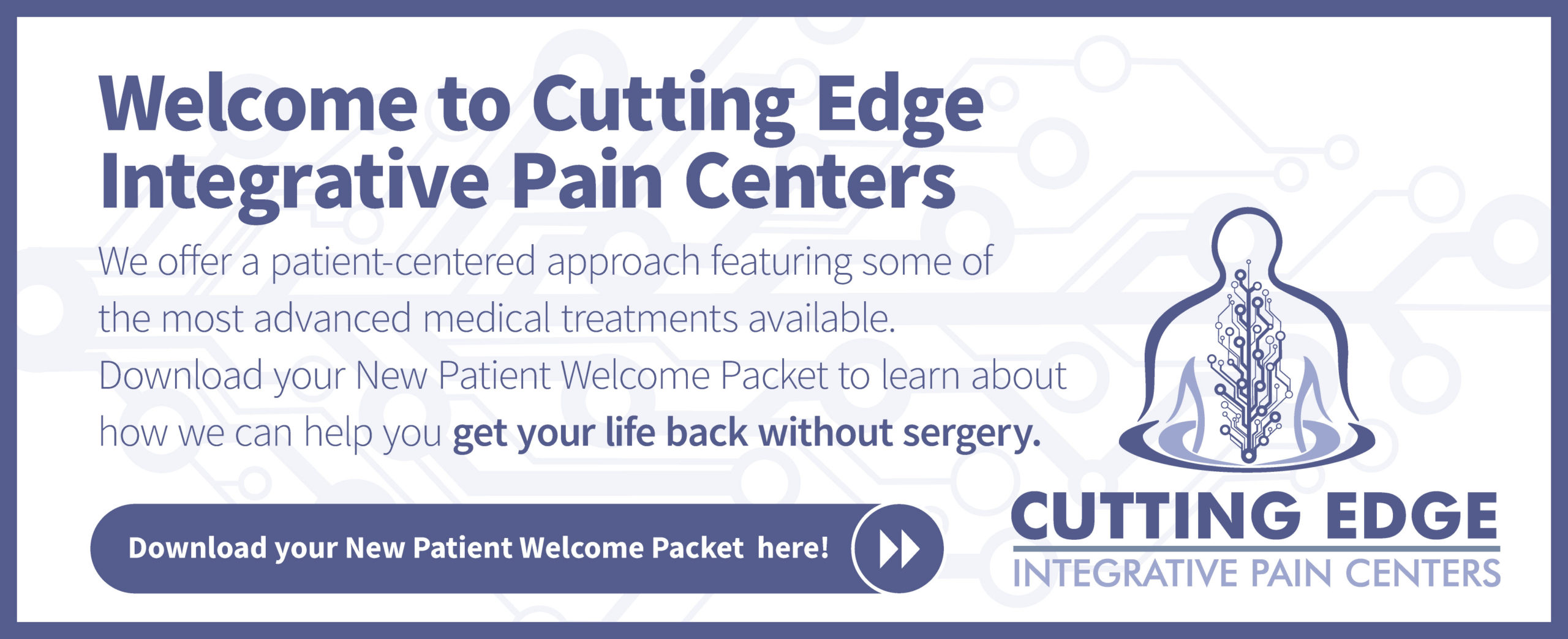Spinal Cord Stimulation
Retrain Your Brain to Control Pain.
A Powerful and Effective Approach to Spinal Pain
About 80% of all adults develop back pain during their lifetime. Back pain is the leading cause of time away from work, and it’s a severe roadblock to enjoying life. The challenge that comes with treating back and neck pain is the spine’s complexity. Think about the spine for a moment: its discs, facet joints, ligaments, spinal nerves and muscles are combined and connected in an incredibly complex way.
When conservative treatments have failed, and you continue to suffer from chronic back or neck pain, you may finally get relief using spinal cord stimulation, which uses a device to block the pain signals from reaching your brain. Dr. Orlando Landrum at Cutting Edge Integrative Pain Centers evaluates the cause of your pain to determine if you’re a good candidate for spinal cord stimulation, then expertly implants the device. To learn more about spinal cord stimulation, call the office or book an appointment online.
Frequently Asked Questions
Which conditions are treatable with spinal cord stimulation?
Spinal cord stimulation treats chronic spinal pain. Your pain may be due to an acute injury or illness that becomes chronic, or your problem may develop gradually over the years from normal wear-and-tear, overuse, or degenerative changes.
These are some of the most common causes of spinal pain:
- Herniated disc
- Disc degeneration
- Slipped disc
- Osteoarthritis
- Pinched nerve
- Narrowed spinal canal
- Sprains and strains
You may also benefit from spinal cord stimulation if you continue to experience pain after spine surgery.
How does spinal cord stimulation relieve pain?
Spinal cord stimulation uses a device that alleviates your pain by masking pain signals usually sent by spinal nerves.
When the stimulator is activated, it sends a mild electric current to the specific nerves in your spine that are responsible for your pain. The electric current blocks the nerve signals, so they don’t reach your brain.
When nerve signals relaying pain don’t reach your brain, you stop feeling the pain even though its source still exists.
How is a spinal cord stimulator device implanted?
The spinal cord stimulator (SCS) device includes several components: a tiny pulse generator, a lead wire with eight to 32 electrodes that deliver the electrical pulses, and hand-held remote control used to adjust settings and turn the SCS device on and off.
If you’re a good candidate for SCS, you’ll first have a trial period in which the lead wires insert, and the electrodes are placed over the nerves responsible for your pain. But the generator during this phase is worn on your waist. The trial period gives you the opportunity to discover whether it works for you before having the generator surgically placed under your skin.
If you find that the procedure works for you, Dr. Landrum surgically implants the pulse generator under your skin.
Are you a good candidate for spinal cord stimulation?
Dr. Landrum evaluates your health and pain history to determine whether spinal cord stimulation is an option for you. You may be a good candidate if you experience debilitating pain for at least three months and meet criteria such as:
- Conservative treatment fails to relieve your pain
- Major surgery isn’t a recommendation, or you don’t want it
- You don’t take medications that may prevent implantation surgery
- You had a successful SCS trial
When you suffer from chronic pain and would like relief from a team that specializes in personalized care, call Cutting Edge Integrative Pain Centers in Elkhart, Indiana, or book an appointment online.
About the Doctor
Orlando A. Landrum MD, MBA
Regenerative Medicine and Interventional Pain Specialist
Our Location
Elkhart, IN
3060 Windsor Court

